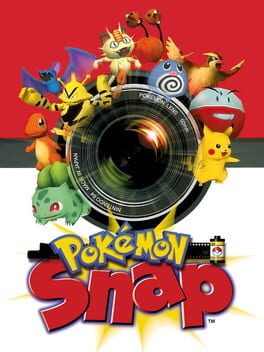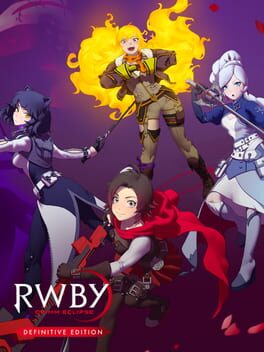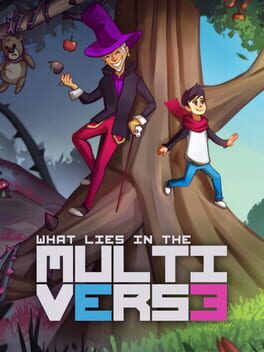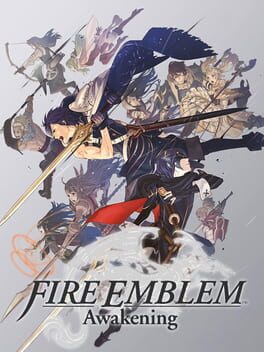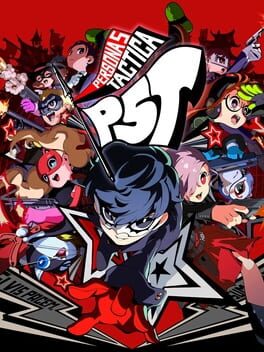SeventyThree
1999
This review contains spoilers
After hearing about Snap for so long, and especially after seeing all the praise for the sequel, I've been really looking forward to playing this game. I had a pretty good time with it. It was fun to see all the different Pokemon in the wild. I already knew about the ability to knock Charmeleon into the lava to evolve it, but pretty much everything else was new. The gameplay itself holds up okay, though I can see a lot of easy things I hope are changed in the sequel, like the one-by-one counting of your pictures and the clunkiness of the menu when selecting the ones you want to show to the professor. There were also some instances where I thought I took a good picture, but it wasn't quite big or centered enough so everything else about it was thrown out. These frustrations didn't ultimately detract too much from the experience, but they were noticeable. I'm definitely looking forward to trying New Pokemon Snap some day.
I played this out of desperation for RWBY content because who knows if we'll ever get more episodes. I'm not generally into this genre of game to begin with, and it was a pretty bare bones experience. I like some of the little references to the show, but that doesn't really save it from being a tedious cycle of fighting the same enemies over and over to inch towards the next levelup and underwhelming upgrade. If I didn't have a friend to play with, I would have been too frustrated with how easy it was to die early on and dropped it. Also, the story is technically there but I almost forgot to mention it in this review so that should tell you how memorable it was.
What Lies in the Multiverse is a 2D puzzle-platformer that really surprised me. Sometimes, when I have a few dollars worth of gold points left over in my Nintendo account, I hop onto the eShop and see what random game I can afford. Usually, I get one-off novelties or hilariously bad shovelware, but this time I actually got a charming little experience I'd recommend people check out.
The gameplay is based around swapping back and forth between different universes to traverse the world and solve puzzles. There are a number of different universes you can see throughout the game, and in addition to providing mechanics for traversal, it's also a lot of fun to see the little stories told exclusively through these universe swaps. You can see lovey-dovey couple in one universe, and then find that they're cruel and violent in another. Or perhaps a bustling city in one will be replaced by a more natural landscape in another. There's a decent variety across the game's runtime and I always look forward to seeing what came next. Plus, collectible artifacts scattered throughout the game encouraged exploration and further expanded on some of these micro-stories.
The plot of the game is nothing mind-blowing, but it did hit on some emotional beats and dark subject matter that I wasn't expecting. There were multiple moments that made me laugh out loud, with witty dialogue, dynamic sprite work, and funny sound cues to really bring up the charm factor. And the little cast of characters you get to know during your journey is very endearing. I will say that a decent amount of dialogue does feel a bit awkward in its phrasing. It looks like this game is originaly from a small indie studio in Chile, so I'm guessing this is just the result of limited resources for translation. It doesn't ruin the experiencd by any means, but it is noticeable.
Overall, this was a very pleasant surprise and I'd recommend it to anyone who wants a lovely little story with some laughs, puzzles, and nice artwork.
The gameplay is based around swapping back and forth between different universes to traverse the world and solve puzzles. There are a number of different universes you can see throughout the game, and in addition to providing mechanics for traversal, it's also a lot of fun to see the little stories told exclusively through these universe swaps. You can see lovey-dovey couple in one universe, and then find that they're cruel and violent in another. Or perhaps a bustling city in one will be replaced by a more natural landscape in another. There's a decent variety across the game's runtime and I always look forward to seeing what came next. Plus, collectible artifacts scattered throughout the game encouraged exploration and further expanded on some of these micro-stories.
The plot of the game is nothing mind-blowing, but it did hit on some emotional beats and dark subject matter that I wasn't expecting. There were multiple moments that made me laugh out loud, with witty dialogue, dynamic sprite work, and funny sound cues to really bring up the charm factor. And the little cast of characters you get to know during your journey is very endearing. I will say that a decent amount of dialogue does feel a bit awkward in its phrasing. It looks like this game is originaly from a small indie studio in Chile, so I'm guessing this is just the result of limited resources for translation. It doesn't ruin the experiencd by any means, but it is noticeable.
Overall, this was a very pleasant surprise and I'd recommend it to anyone who wants a lovely little story with some laughs, puzzles, and nice artwork.
I've dabbled in Fire Emblem in the past but this was the first one I've actually played to completion. I wasn't sure what to expect based on the earlier games in the series I had tried out, but I ended up having a lot of fun. The battles felt like exciting, deadly puzzles I had to navigate (even though I was playing on casual mode). It was a pretty challenging experience; if I had been playing with permadeath, I would have been in serious touble by the end. The overall plot wasn't anything mind-blowing, but it had some standout moments and was elevated by a likeable cast. This was a great time and I'm excited to try more in the series and the wider tactics genre.
2023
This review contains spoilers
For better or worse, I will play anything related to Persona 5. Persona 5 Royal is my favorite game, so this is simply how it must be. In the case of Persona 5 Strikers, it ended up being a very nice follow-up, with great new characters and gameplay that got me engaged in a genre I tend to shy away from. Unfortunately, the same did not occur with Persona 5 Tactica.
My experience with tactics games was almost non-existent before starting this. I had dabbled in a couple early Fire Emblem games but that was pretty much it. From the start of this game, I enjoyed all the different stylistic choices that made it feel right at home with other Persona 5 games. There’s a new graphical style which is super cute, but not out of place with the various ways these characters have been depicted. Attacks in battle, especially guns and melee, have a great sense of impact. When you’re at the hideout, you can see the party sitting around and just being themselves while they relax. I always love details like that; the original game did the same with its hideouts and safe rooms, and it’s a nice way to make the characters feel more realized.
The story took an interesting direction. I like seeing how games like this and Strikers build their plots to work within shorter timeframes compared to the sprawling hundred-hour original. Rather than each section being dedicated to an entirely new subplot, each part is now exploring a different aspect of one character: Toshiro Kasukabe. I liked him well enough. They went with an amnesia story which can be annoying, but I didn’t mind it here. Everyone’s blunt remarks about his cowardice, including his own, were pretty funny, and I appreciated that his arc brought him to a place of confidence by the end. Erina is also a decent character. It was fun to see her interactions with the rest of the party, but her best moments were always her interactions with Toshiro, which makes sense.
As for the actual plot, I’d call it mostly serviceable with a few interesting twists. Erina being a cognitive being who’s also Toshiro’s Persona was cool. The corrupt politics of Toshiro’s life were alright, but not the most interesting when compared to the stuff you see in Persona 5. Of course, there’s a lot less time to flesh anything out here, but it’s inevitable that the two stories will be compared anyway.
I have to say that I didn’t love how they handled the big reveal of how Toshiro’s school days ended. Maybe I missed something, but how did not a single one of the party members say something to the effect of “it wasn’t your fault” regarding Eri’s injury and the behavior of the other students? Yes, technically it was the movement he started which caused the whole series of events. But he was a student, and he was working for a just cause. Other people took things too far and tried to exploit it, which he didn’t really have control over. An adult man PUSHED SOMEONE IN FRONT OF A TRAIN. Toshiro blames himself for her injury, and that makes sense for the character. But all anyone can say is “you can’t let the past control you.” That’s a fine message, but NO ONE is going to even try to tell him that he shouldn’t blame himself? This isn’t a “Peter Parker causes Uncle Ben’s death” situation. Toshiro’s actions were selfless and the attack was one EVENTUAL consequence, many steps removed, of what he started. I could be overthinking this, but it bothered me during my playthrough.
Here's where I complain about the battles. Despite all the positives I’ve discussed thus far, the general experience of playing this game was an absolute slog. It’s just a constant loop of conversation and battle, conversation and battle. I realize that on the surface this just sounds like a general description of what many RPGs are, but there was just nothing to break up the tedium. Most of the battles felt exactly the same, as there wasn’t a huge variety of battle goals. They introduced different gimmicks in the new areas, like the “school rules” restricting skill usage, but those just extended fights that were already uninteresting because there’s not much room for different strategies. You just need to knock over an enemy and then make a triangle for an all-out attack. This is your best bet in your early battles and it never stops working. The maps don’t seem designed to force you to think outside the box. The obstacles aren’t a fun challenge; they just feel like a waste of time because you know exactly how every interaction is going to go.
And the boss battles are the absolute worst offenders. The first one is fine, but the others involve painstakingly approaching and slowly chipping away at their oversized health bars without anything to make them truly engaging. I will say that I played on a lower difficulty, which could be an explanation for why the opposition in these fights wasn’t particularly threatening. However, the map navigation was the biggest issue. And these fights already took forever on easy, so I can only imagine how much time they would take if I also had to manage my health even more closely.
I was so burnt out on these battles that I took a break partway through the game and played Fire Emblem: Awakening. I want to keep this review focused on Persona, and I know it’s not exactly fair to play a highly acclaimed staple of the genre back-to-back with this spinoff. However, all the complaints I’ve discussed here were already problems for me before I took that break. If anything, playing Fire Emblem when I did only reassured me that there was more fun to be had in tactics than I was getting here.
I enjoyed the story and characters well enough to give my opinion on this game a boost, but overall Persona 5 Tactica is very flawed. Once I finish the DLC (which I very smartly paid for before the game even released) I don’t think I’ll ever revisit it.
My experience with tactics games was almost non-existent before starting this. I had dabbled in a couple early Fire Emblem games but that was pretty much it. From the start of this game, I enjoyed all the different stylistic choices that made it feel right at home with other Persona 5 games. There’s a new graphical style which is super cute, but not out of place with the various ways these characters have been depicted. Attacks in battle, especially guns and melee, have a great sense of impact. When you’re at the hideout, you can see the party sitting around and just being themselves while they relax. I always love details like that; the original game did the same with its hideouts and safe rooms, and it’s a nice way to make the characters feel more realized.
The story took an interesting direction. I like seeing how games like this and Strikers build their plots to work within shorter timeframes compared to the sprawling hundred-hour original. Rather than each section being dedicated to an entirely new subplot, each part is now exploring a different aspect of one character: Toshiro Kasukabe. I liked him well enough. They went with an amnesia story which can be annoying, but I didn’t mind it here. Everyone’s blunt remarks about his cowardice, including his own, were pretty funny, and I appreciated that his arc brought him to a place of confidence by the end. Erina is also a decent character. It was fun to see her interactions with the rest of the party, but her best moments were always her interactions with Toshiro, which makes sense.
As for the actual plot, I’d call it mostly serviceable with a few interesting twists. Erina being a cognitive being who’s also Toshiro’s Persona was cool. The corrupt politics of Toshiro’s life were alright, but not the most interesting when compared to the stuff you see in Persona 5. Of course, there’s a lot less time to flesh anything out here, but it’s inevitable that the two stories will be compared anyway.
I have to say that I didn’t love how they handled the big reveal of how Toshiro’s school days ended. Maybe I missed something, but how did not a single one of the party members say something to the effect of “it wasn’t your fault” regarding Eri’s injury and the behavior of the other students? Yes, technically it was the movement he started which caused the whole series of events. But he was a student, and he was working for a just cause. Other people took things too far and tried to exploit it, which he didn’t really have control over. An adult man PUSHED SOMEONE IN FRONT OF A TRAIN. Toshiro blames himself for her injury, and that makes sense for the character. But all anyone can say is “you can’t let the past control you.” That’s a fine message, but NO ONE is going to even try to tell him that he shouldn’t blame himself? This isn’t a “Peter Parker causes Uncle Ben’s death” situation. Toshiro’s actions were selfless and the attack was one EVENTUAL consequence, many steps removed, of what he started. I could be overthinking this, but it bothered me during my playthrough.
Here's where I complain about the battles. Despite all the positives I’ve discussed thus far, the general experience of playing this game was an absolute slog. It’s just a constant loop of conversation and battle, conversation and battle. I realize that on the surface this just sounds like a general description of what many RPGs are, but there was just nothing to break up the tedium. Most of the battles felt exactly the same, as there wasn’t a huge variety of battle goals. They introduced different gimmicks in the new areas, like the “school rules” restricting skill usage, but those just extended fights that were already uninteresting because there’s not much room for different strategies. You just need to knock over an enemy and then make a triangle for an all-out attack. This is your best bet in your early battles and it never stops working. The maps don’t seem designed to force you to think outside the box. The obstacles aren’t a fun challenge; they just feel like a waste of time because you know exactly how every interaction is going to go.
And the boss battles are the absolute worst offenders. The first one is fine, but the others involve painstakingly approaching and slowly chipping away at their oversized health bars without anything to make them truly engaging. I will say that I played on a lower difficulty, which could be an explanation for why the opposition in these fights wasn’t particularly threatening. However, the map navigation was the biggest issue. And these fights already took forever on easy, so I can only imagine how much time they would take if I also had to manage my health even more closely.
I was so burnt out on these battles that I took a break partway through the game and played Fire Emblem: Awakening. I want to keep this review focused on Persona, and I know it’s not exactly fair to play a highly acclaimed staple of the genre back-to-back with this spinoff. However, all the complaints I’ve discussed here were already problems for me before I took that break. If anything, playing Fire Emblem when I did only reassured me that there was more fun to be had in tactics than I was getting here.
I enjoyed the story and characters well enough to give my opinion on this game a boost, but overall Persona 5 Tactica is very flawed. Once I finish the DLC (which I very smartly paid for before the game even released) I don’t think I’ll ever revisit it.
